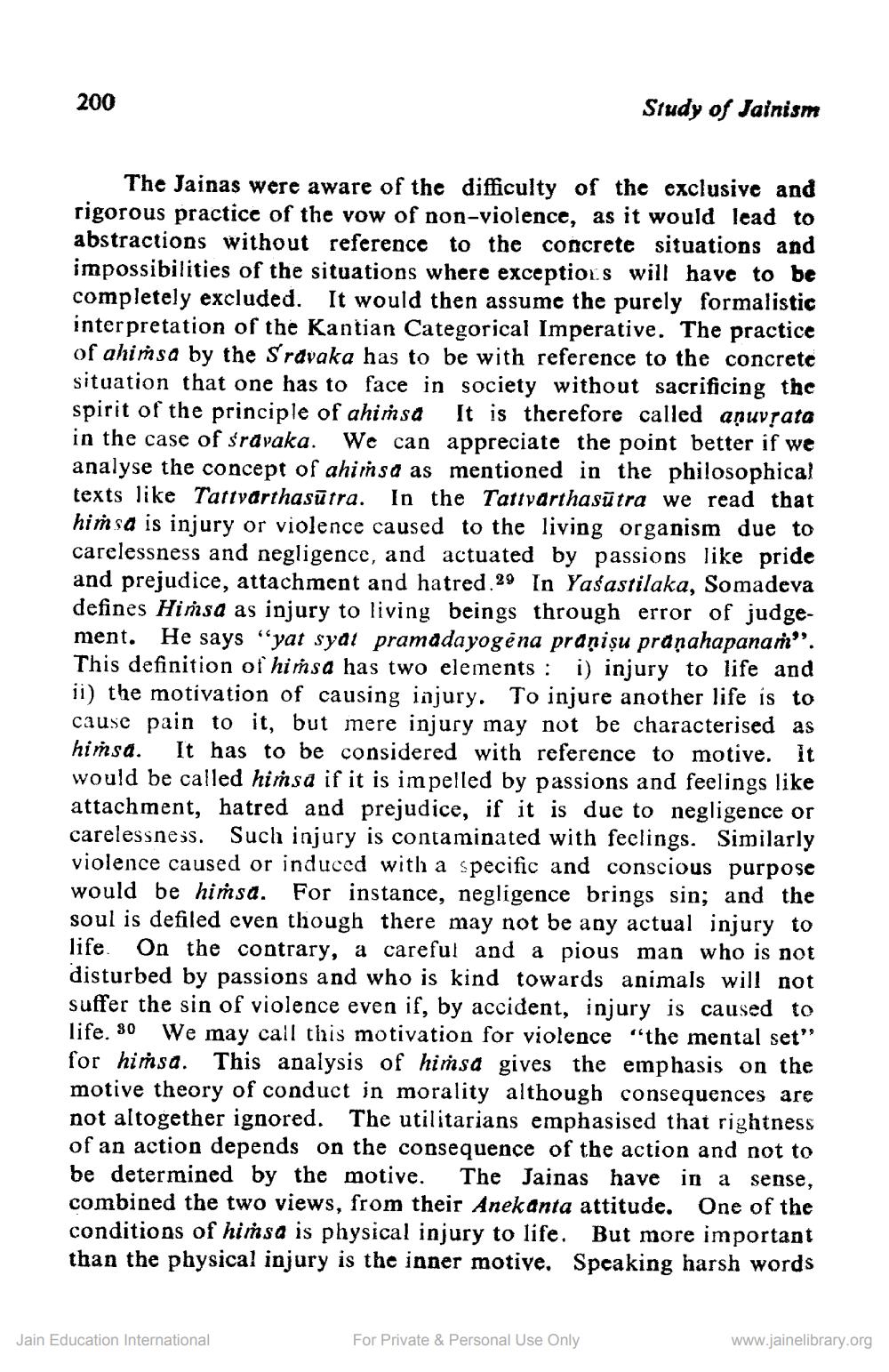________________
200
The Jainas were aware of the difficulty of the exclusive and rigorous practice of the vow of non-violence, as it would lead to abstractions without reference to the concrete situations and impossibilities of the situations where exceptions will have to be completely excluded. It would then assume the purely formalistic interpretation of the Kantian Categorical Imperative. The practice of ahimsa by the Sravaka has to be with reference to the concrete situation that one has to face in society without sacrificing the spirit of the principle of ahimsa It is therefore called aṇuvṛata in the case of sravaka. We can appreciate the point better if we analyse the concept of ahimsa as mentioned in the philosophical texts like Tattvarthasutra. In the Tattvarthasutra we read that himsa is injury or violence caused to the living organism due to carelessness and negligence, and actuated by passions like pride and prejudice, attachment and hatred.29 In Yasastilaka, Somadeva defines Himsa as injury to living beings through error of judgement. He says "yat syat pramadayogēna prāņiṣu prāṇahapanaṁ". This definition of himsa has two elements: i) injury to life and ii) the motivation of causing injury. To injure another life is to cause pain to it, but mere injury may not be characterised as himsa. It has to be considered with reference to motive. It would be called himsa if it is impelled by passions and feelings like attachment, hatred and prejudice, if it is due to negligence or carelessness. Such injury is contaminated with feelings. Similarly violence caused or induced with a specific and conscious purpose would be himsa. For instance, negligence brings sin; and the soul is defiled even though there may not be any actual injury to life. On the contrary, a careful and a pious man who is not disturbed by passions and who is kind towards animals will not suffer the sin of violence even if, by accident, injury is caused to life. 30 We may call this motivation for violence "the mental set" for himsa. This analysis of himsa gives the emphasis on the motive theory of conduct in morality although consequences are not altogether ignored. The utilitarians emphasised that rightness of an action depends on the consequence of the action and not to be determined by the motive. The Jainas have in a sense, combined the two views, from their Anekanta attitude. One of the conditions of himsa is physical injury to life. But more important than the physical injury is the inner motive. Speaking harsh words
Jain Education International
Study of Jainism
For Private & Personal Use Only
www.jainelibrary.org




